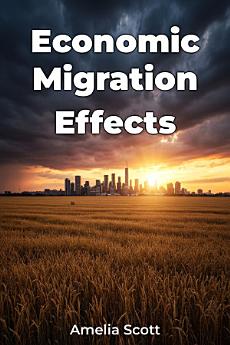Economic Migration Effects
About this ebook
Intriguingly, the book reveals that globalization and technological advancements have reshaped migration's scale and scope, while remittances sent home by migrants can significantly impact developing economies.
The book adopts a systematic approach, starting with core migration theories like neoclassical economics and dual labor market theory. It progresses to analyzing the economic impacts of migration on labor markets, economic growth, and public finances using financial analyses and labor market studies. A key feature is its integration of micro-level decision-making with macro-level economic analysis, offering a comprehensive view of how individual choices shape broader migration trends.
The book concludes by exploring the political science aspect of policy implications, offering evidence-based recommendations for managing migration flows to benefit migrants and host communities. It emphasizes the importance of understanding economic incentives to predict and manage migration effectively, making it a valuable resource for students, researchers, policymakers, and anyone interested in the economics of migration.








